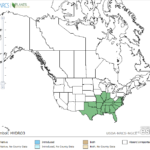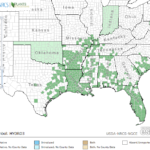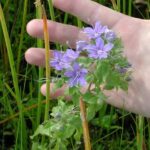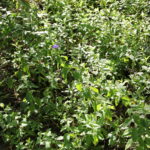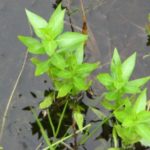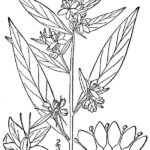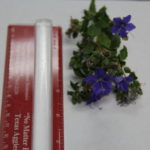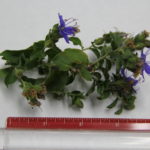Hydrolea spp.
USDA, NRCS. 2018. The PLANTS Database (http://plants.usda.gov, 28 March 2018). National Plant Data Team, Greensboro, NC 27401-4901 USA.
Illustration: USDA-NRCS PLANTS Database / Britton, N.L., and A. Brown. 1913. An illustrated flora of the northern United States, Canada and the British Possessions. 3 vols. Charles Scribner’s Sons, New York. Vol. 3: 71.
What is Waterleaf?
Physical Characteristics
Leaves:
- 1.19-4.72 inches long
- 0.2-1.19 inches wide
Flowers:
- Bright blue, occasionally white
- Showy
- 0.39-1 inches wide
- Sepals shorter than the flower
Fruit:
- Egg-shaped or spherical
- Many seeds
- Small seeds
Stem:
- Sturdy & upright
Where Does it Grow?
Waterleaf can be found on the banks of ponds and streams in shallow water.
Pros and Cons of Waterleaf
Waterleaf has no direct food value for wildlife. Submerged portions of all aquatic plants provide habitats for many micro and macro invertebrates. These invertebrates in turn are used as food by fish and other wildlife species (e.g. amphibians, reptiles, ducks, etc.). After aquatic plants die, their decomposition by bacteria and fungi provides food (called “detritus”) for many aquatic invertebrates.
What Type of Waterleaf Do I Have?
There are three common types of waterleaf in North America. Only two of them are common in Texas. Click on the buttons to learn more about each individual species.
